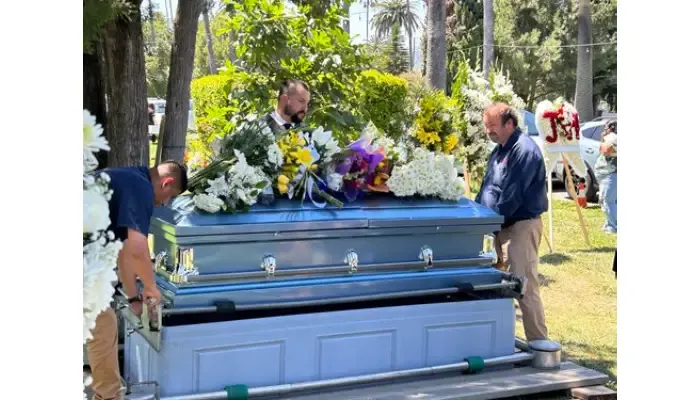Planning cremation Services near me for a loved one involves several important steps that help honor their wishes while easing the family’s burden. Start by talking openly with family members about preferences and who will handle arrangements, since legal consent is usually needed from close relatives. Understand the types of cremation available, such as traditional or direct cremation, and consult a trusted funeral professional to discuss costs and procedures clearly. It’s essential to document all decisions carefully in writing and include them in any legal wills. Finally, plan the ceremony thoughtfully, whether before or after cremation, and decide how remains will be managed respectfully to provide closure for everyone involved.
Initial Family Discussions and Consent for Cremation
Starting conversations about cremation with key family members and loved ones early on is important to avoid confusion or delays later. It helps to clarify the deceased person’s wishes or, if planning ahead, your own preferences about cremation before decisions become urgent. Typically, legal consent for cremation falls to the spouse or the majority of adult children, so identifying who holds that authority is essential. Addressing any potential disagreements or concerns upfront can ease emotional tension and prevent misunderstandings. It’s also helpful to explain both the emotional and practical aspects of cremation so everyone involved has a clear understanding of what the process entails. Agreeing on who will communicate with the funeral provider and relevant authorities ensures a smoother process. Family members should be informed about the timeline and necessary steps following death to stay prepared. Whenever possible, document verbal agreements and keep a record of family discussions as a reference. Reviewing any advance directives or legal documents that specify cremation wishes is a crucial step. Since plans may evolve, be ready to have follow-up conversations as new information emerges or circumstances change.
- Identify key family members and loved ones to involve in cremation discussions early
- Clarify the deceased’s or your own wishes regarding cremation before decisions are needed
- Discuss who has the legal authority to consent, usually spouse or majority of adult children
- Address any possible disagreements or concerns among family members in advance
- Explain the emotional and practical aspects of cremation to ensure understanding
- Agree on who will handle communication with the funeral provider and authorities
- Confirm family members are aware of the timeline and necessary steps after death
- Document verbal agreements and keep a record of family discussions for reference
- Review any existing advance directives or legal documents that cover cremation wishes
- Prepare for follow-up conversations as plans develop and new information arises.
Types of Cremation Services Explained
When planning cremation services, it’s important to understand the different types available to choose what fits best for your family’s needs and wishes. Traditional cremation includes a funeral service where the body is present, allowing loved ones to say their goodbyes in a familiar setting before the cremation takes place. Memorial cremation works differently: the body is cremated first, and then a memorial service is held later without the body, giving flexibility in scheduling and often reducing upfront costs. Direct cremation skips any funeral or memorial service altogether and focuses solely on the cremation process, making it the most affordable and straightforward option. Another less common choice is cremation in the name of science, where the body is donated to research before being cremated, often at no cost to the family. Costs generally vary among these options, with traditional and memorial services tending to be more expensive due to ceremonies and additional arrangements. It’s also important to consider whether religious or cultural practices influence the type of service chosen, as some faiths have specific requirements or preferences. Some providers offer hybrid services, like a viewing before a direct cremation, combining elements of tradition with simplicity. Always check local laws to ensure compliance with any rules or permits required for each type of cremation service. Asking your provider for clear explanations about what each service includes can help avoid unexpected surprises during an already difficult time.
Choosing and Consulting a Funeral Provider
When planning cremation services, selecting the right funeral provider is an important step. Start by searching for local funeral homes or crematories known for good reputations and clear communication. It helps to read reviews and ask for recommendations to find a provider you feel comfortable working with. Request detailed price lists and compare the costs of cremation packages and any additional services you may want, such as urns or memorial items. Make sure to verify the provider’s licensing and credentials to ensure they comply with state and local laws. Ask about their experience with the specific type of cremation service you prefer, whether it’s direct cremation, memorial cremation, or another option. Clarify which paperwork and permits they will handle on your behalf and what responsibilities will fall to your family. Transport services should also be discussed, including pickup from the place of death and delivery to the crematory. Don’t hesitate to inquire about policies on cancellations, changes, and refunds to avoid surprises later. Remember your rights under the FTC Funeral Rule, which guarantees you pay only for selected services and receive an itemized price list. Before finalizing your decision, schedule a visit or phone consultation to go over your plans and ask any questions. This conversation can help you feel more confident that the provider will honor your loved one’s wishes and support your family through the process.
Documenting Cremation Wishes and Legal Instructions
Writing down clear cremation wishes in a legal Will or advance directive is crucial to ensure your loved one’s preferences are respected. Be specific about the type of cremation service desired, whether it’s a traditional service with the body present, a memorial after cremation, or direct cremation without ceremony. Include details about timing, any planned memorial events, and instructions for handling the ashes, such as who will manage them and how they should be distributed or stored. It’s important that all documents are properly signed, dated, and witnessed according to state laws to make them legally valid. Copies of these instructions should be shared with the executor, close family members, and the chosen funeral provider to avoid confusion later. If the deceased wished to donate organs or body parts to science, or made arrangements for scientific donation followed by cremation, these should also be clearly noted. Financial plans related to cremation expenses, such as prepaid plans or insurance policies, are best included as well to ease the burden on survivors. Consulting an attorney or legal expert can help confirm that all documents meet legal requirements and will be enforceable. Finally, keep these papers in a secure yet accessible place so authorized individuals can find them when needed, ensuring your loved one’s final wishes are honored without added stress.
Planning the Ceremony or Memorial Service
When planning a ceremony or memorial service for a loved one who has been cremated, the first step is deciding on the type of event. This might be a traditional funeral before cremation, a memorial service after cremation, or a more informal gathering or celebration of life. The choice depends on what feels right for the family and how the deceased would have wanted to be remembered. Next, select a location that fits the size and style of the event. This could be a funeral home, a place of worship, a community center, or even a meaningful outdoor spot. Involving family and friends in the planning helps make the event personal and comforting. You might ask people to share memories as speakers or readers, or invite musicians to play pieces meaningful to the deceased. Collecting photos, videos, and keepsakes can create a display that honors their life and personality. Music, prayers, or readings chosen should reflect what mattered most to your loved one, whether those are religious traditions, favorite poems, or songs. Be sure to consider any cultural or religious customs that should be included to respect the deceased’s background. Setting the date and time early is important to give guests enough notice, especially those who may need to travel. Announcements or invitations can be sent by mail, email, or social media, depending on what works best for your group. If you plan to have refreshments or a reception after the service, organize this in advance, including food, drink, and space. Finally, coordinate with the funeral provider or venue to arrange details like seating, parking, and audio equipment to ensure the event runs smoothly and everyone can participate fully.
Options for Handling Cremated Remains
When planning what to do with cremated remains, it’s important to decide who will be responsible for the ashes and clearly document this decision to avoid confusion later. Many families choose to scatter ashes in a place that held meaning for their loved one, but it’s essential to research local laws and obtain any necessary permits, since restrictions often apply to scattering on public lands, waterways, or private property. Another common option is to keep the ashes in an urn, which can be stored at home or placed in columbariums, mausoleums, or burial plots. Some family members prefer keepsake urns or memorial jewelry that allow them to carry a small portion of the ashes. If dividing ashes among relatives is desired, this plan should be communicated and documented to ensure everyone understands the arrangement. Environmentally friendly choices are increasingly popular, such as biodegradable urns that return remains to nature or planting memorial trees using ashes mixed with soil. Families sometimes hold a secondary ceremony or ritual when scattering ashes or placing urns to create a meaningful moment of remembrance. Throughout this process, keep detailed records of any permits or authorizations required for handling the remains, and make sure all involved parties, including executors, are informed about the final disposition plan to prevent misunderstandings.
Legal Permits and Required Documentation
Before a cremation can take place, it’s essential to secure the proper legal permits and complete all necessary paperwork to comply with state and local laws. The process begins with obtaining the official death certificate from the attending physician or coroner, which serves as the fundamental legal record of death. Next-of-kin or legal representatives must provide the required authorizations, typically by signing cremation authorization forms mandated by law. These forms grant permission to proceed and ensure that the family’s consent is formally documented. In addition to authorization, permits are often required for transporting the body to the crematory and later for moving the cremated remains, especially if they cross state lines or are being scattered in public or private locations. It’s important to check if scattering ashes at a chosen site needs a special permit, as rules vary widely. Funeral providers usually handle filing the necessary paperwork with local authorities, but families should confirm this to avoid delays. Compliance with any mandatory waiting periods or inspections before cremation is also critical, as some jurisdictions require a set time after death before the procedure can move forward. Keeping copies of all documents is advisable for the family’s records and any future needs. If officials request additional paperwork or corrections, prompt follow-up helps keep the process on track. Finally, verify that the funeral home or cremation provider understands and follows all applicable state and federal regulations to ensure a smooth and lawful cremation process.
Arranging Transportation for the Deceased
Arranging transportation for a loved one after death involves careful coordination to ensure the body is respectfully and legally moved from the place of death to the funeral home or crematory. Whether the deceased passes at a hospital, home, or hospice, you should confirm pickup details promptly with the chosen funeral or cremation provider. Understand what transportation options they offer, some handle only local transfers while others provide long-distance services, which may come with additional fees. If the transport crosses state lines, ask if the provider offers professional escorts or handles the necessary permits for interstate transfer. Preparing all required paperwork and identification that must accompany the body is essential to avoid delays. It’s also important to discuss timing upfront to make sure the body arrives at the crematory within legal timeframes and provider policies. The mode of transportation can vary from a traditional hearse to a van or specialized vehicle, depending on the provider and your preferences. Keep family members informed about transportation plans and expected arrival times to manage expectations and reduce stress. Verify that the transportation service follows all health and safety regulations, especially when handling the deceased during sensitive times. Finally, plan for the cremated remains’ transportation after cremation, whether to a family member, final resting place, or other disposition, ensuring a smooth continuation of the process.
Managing Cremation Costs and Payment Options
Before making any decisions, request a detailed, written price list from funeral homes to understand all potential charges. Cremation costs can vary widely depending on services chosen, so comparing package options helps find the best fit for your needs and budget. Prepayment plans are worth exploring as they lock in current prices and can ease the financial burden on family members later. Know which payment methods the provider accepts, such as cash, credit cards, insurance policies, or trust accounts. Cremation insurance and final expense policies are designed specifically to cover funeral costs and can be arranged in advance. Another option is setting up Payable on Death (POD) accounts, which designate funds for cremation expenses accessible after the individual’s passing. If upfront payment is difficult, ask about payment plans or sliding scale fees that some providers offer. Also, check if government programs or veteran benefits apply, as these can help offset costs. Remember that additional fees may apply for items like urns, transportation, permits, or special services, so confirm what is included in any package. Keep all receipts and contracts organized for family records and future reference to avoid confusion or disputes.
Practical Tips for Smooth Cremation Planning
Begin the planning process as soon as possible to avoid last-minute stress and rushed decisions. Organize all important documents, including cremation authorizations, permits, and receipts, in one accessible place so the executor and family members can easily find them. Keep open and honest communication with family members and funeral providers to ensure everyone understands the decisions being made and to prevent misunderstandings. Be mindful of cultural, religious, or personal preferences during service arrangements and in how the remains are handled, respecting the wishes of your loved one. Consider using online resources or consulting professionals for help with wills and advance directives to clearly outline intentions and ease the burden on family. Before moving forward, double-check that all legal requirements and permits have been secured to avoid delays. Funeral homes or local community groups often offer grief support services, which can be valuable for family members coping with loss; discuss these options early on. Prepare for possible delays caused by administrative processes or health regulations, especially in unusual circumstances. Keep copies of every contract and correspondence related to the cremation to maintain a clear record of agreements and transactions. Finally, revisit and update cremation plans periodically to reflect any changes in personal wishes or relevant laws, ensuring the plan remains current and accurate.
Frequently Asked Questions
1. What are the key steps involved in planning cremation services for a loved one?
Planning cremation services usually involves deciding the type of service, choosing a provider, arranging the necessary paperwork like death certificates, and deciding how to handle the ashes. It helps to make these decisions based on what best honors your loved one’s wishes and your family’s needs.
2. How can I make cremation services more personalized and meaningful?
You can personalize cremation services by including favorite music, readings, or rituals during a memorial. Some families choose special containers for ashes or hold ceremonies in meaningful locations. Talking with a funeral director can also help you include personal touches that reflect your loved one’s life.
3. What legal documents are needed to arrange cremation services?
Typically, you’ll need the death certificate and a cremation authorization form signed by the next of kin or legal representative. These documents verify identity and consent, ensuring the process complies with state laws. Your cremation provider will guide you through acquiring and submitting the necessary paperwork.
4. Is it possible to hold a memorial service before or after the cremation?
Yes, memorial services can be held before or after cremation depending on what you prefer. Some choose to have a viewing or service before cremation, while others prefer a gathering afterward to honor the person’s memory. Both options allow family and friends to say goodbye in a meaningful way.
5. How do I choose the right cremation service provider for my family?
Look for providers with good reputations, proper licensing, and clear communication. You might want to compare their services, facilities, and how comfortable you feel with their staff. Reading reviews and asking for recommendations can also help ensure you find someone respectful and reliable during a difficult time.
TL;DR Planning cremation services involves open family conversations, understanding cremation types, and choosing a trusted funeral provider. It’s important to document all wishes legally and decide how to handle the ashes, whether scattering, storing, or keepsakes. Make sure to get the necessary permits, arrange transportation, and manage costs with clear payment options. Starting early and keeping communication clear helps ensure the process respects your loved one’s wishes and eases the burden on family.
Resource URL:
https://en.wikipedia.org/wiki/Cremation
https://www.farringtonmortuary.com/

Mary Burns is a dedicated writer focusing on health and fitness topics. With a passion for promoting wellness and vitality, Mary shares her knowledge and expertise through engaging and informative blog posts.




